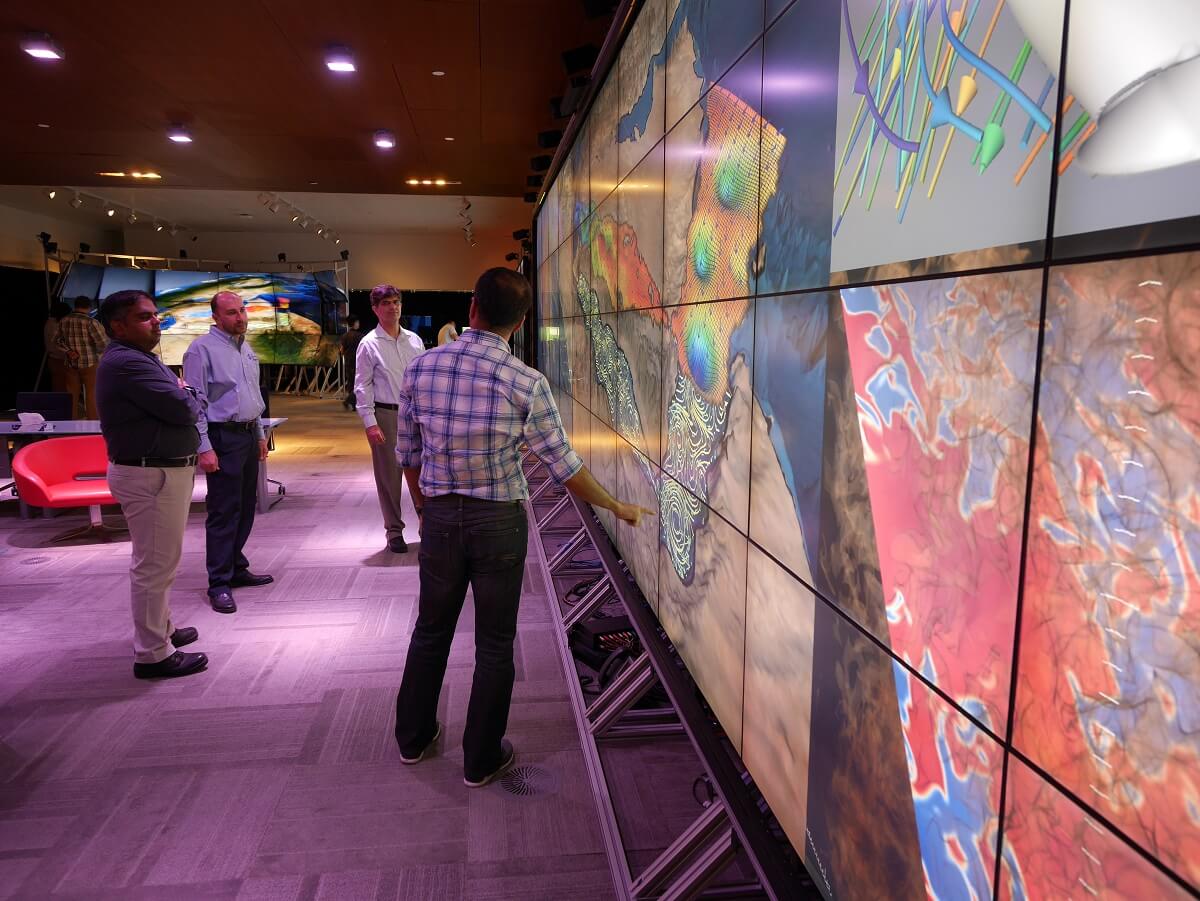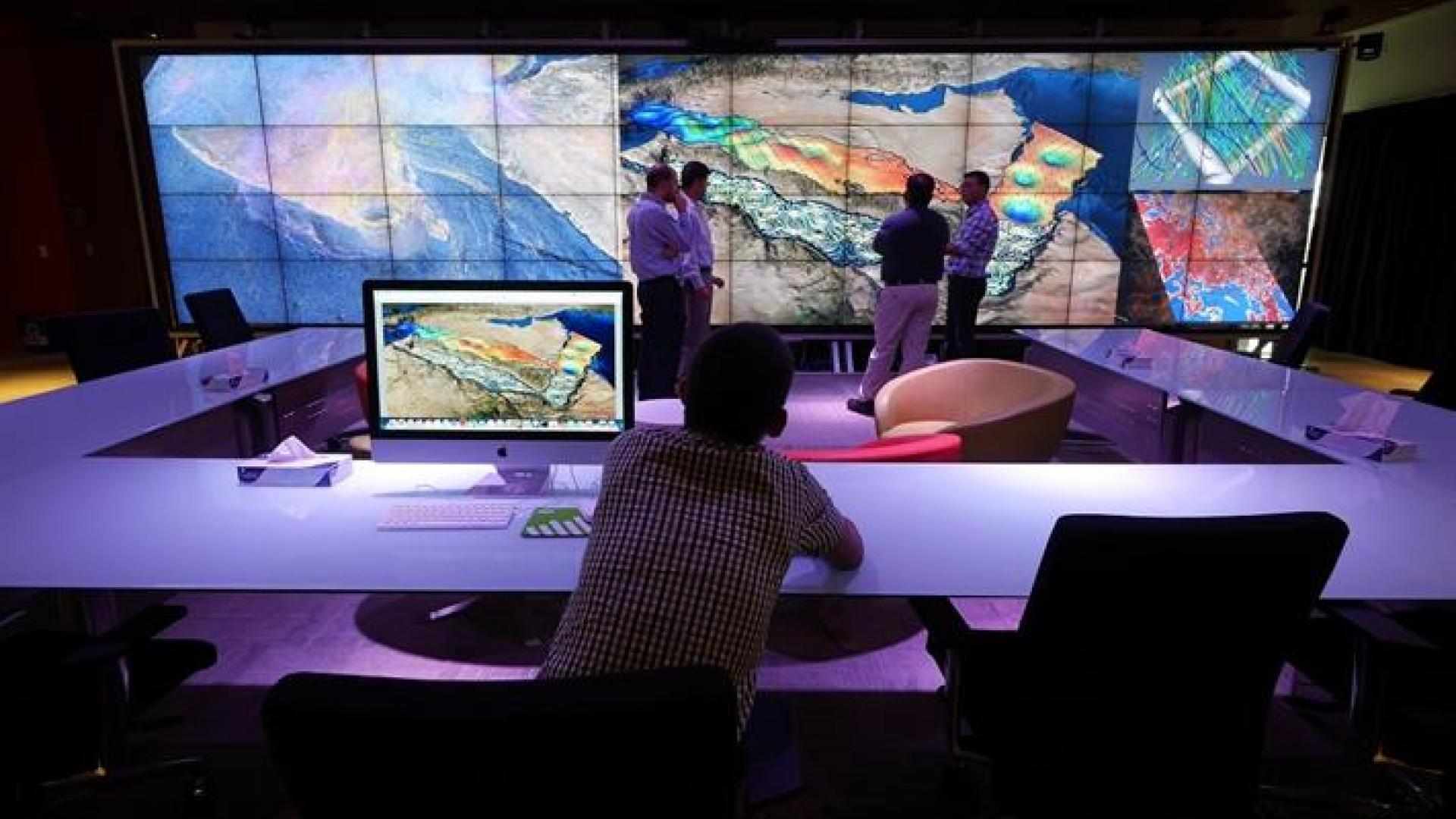A recent study by a team including KAUST Earth scientists and oceanographers revealed that surface temperatures in the Red Sea may be cooling rather than rising.
Analysis of long-term data sets shows that the current high warming rates of the Red Sea appear to be a combined effect of global warming and natural long-duration changes in sea surface temperature.
"Our study has revealed a sequence of alternating positive and negative trends in Red Sea surface temperatures. Over the next decades, the trends indicate a cooling phase that may counter the effects of global warming," stated Ibrahim Hoteit, KAUST associate professor of Earth science and engineering.

KAUST Associate Professor Ibrahim Hoteit and his research group analyze data on the Red Sea in the KAUST Visualization Core Lab. File photo.
Hoteit and colleagues in the KAUST Red Sea Modeling and Forecasting Group used the University's supercomputer Shaheen II and state-of-the-art equipment in the KAUST Visualization Core Lab to analyze over 100 years of satellite data.
The data reveals how the Atlantic Multidecadal Oscillation (AMO) strongly influences surface temperatures in the Red Sea. Counter to global trends related to climate change, the research points to a cooling phase over the next few decades.
Read the full article

